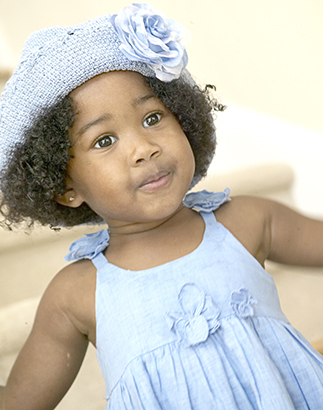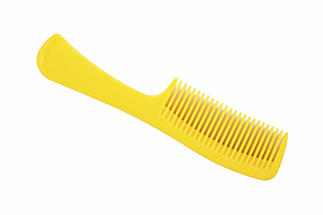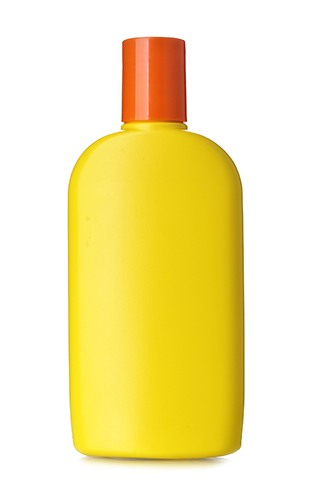Head lice
What are head lice?
Head-lice, also known as nits, are the bane of many parents’ existence. They are tiny parasitic insects without wings that live on the scalp of humans. Adult head lice are about 2-3 mm long, brown in colour, with 6 legs, each with a claw at the end – they are able to reproduce after approximately 17 days and lay around 3-8 eggs every day.
 Hatchlings are smaller and more translucent. They crawl quickly and can transfer easily between children especially during hugging and playing head to head. Head lice cannot fly, jump or swim.
Hatchlings are smaller and more translucent. They crawl quickly and can transfer easily between children especially during hugging and playing head to head. Head lice cannot fly, jump or swim.
The presence of nits is not a sign of poor hygiene; in fact it’s more a sign of bad luck.
How do I check if my child has head lice?
Unfortunately, a simple visual check isn’t always sufficient to detect them. Often, the first parents know of head lice’s existence is when their child complains of an itchy scalp (lice do not always cause itching), or when they receive formal notification from their child’s day-care or school. This usually occurs well into the infestation.
The easiest way to check for head lice is:
- Comb hair with conditioner (the cheaper the better) onto dry, brushed (detangled) hair. This stuns the lice and makes it difficult for them to grip the hair or crawl around.
- Now comb sections of the hair with a fine-tooth head lice comb.
- Wipe the conditioner from the comb onto a white paper towel or tissue.
- Look on both the tissue and the comb for lice and eggs.
- Repeat the combing for every part of the head at least four or five times.
Checking for nit eggs
Head lice are grey-brown in colour, the size of a pinhead when hatched and the size of a sesame seed when fully grown. They latch on to the base of the hair shaft. Behind the ears and at the base of the neck are the most common places for nits to lay their eggs. You may need to use your fingernails to “pinch” and remove them from the hair shaft. You’ll be able to recognise a “live” nit egg as you can pop it between your fingernails, whereas a dead egg is empty and collapses more easily.
Head lice treatments
Usually, head lice can be treated effectively by using medicated lotions or by wet combing, using a specially designed head lice comb. Wet combing can be used without medicated lotions, but needs to be done regularly and can take a long time to do thoroughly.
Medicated lotion or spray can be used as an alternative. However, no medicated treatment is 100% effective. Your pharmacist will be able to recommend an over-the-counter lotion or spray.
Head lice can be difficult to treat due to a high re-infestation rate and their ability to develop resistance to traditional insecticides contained in some medications.
After a head lice infestation has been confirmed, you can treat the lice at home by wet combing the hair using a head lice comb, or by using medicated lotion (see below). However, neither will protect against re-infestation if head-to-head contact is made with someone with head lice during the treatment period.
Wet combing
The wet combing method involves removing the head lice by systematically combing the hair using a special fine-toothed comb. Combs are available from pharmacies.
Medicated products do not need to be used for wet combing. This is good because head lice are becoming more resistant to the insecticides commonly used to remove them. However, for wet combing to be effective, it needs to be regular and thorough.
This is the method you should use:
Wash the hair using ordinary shampoo and apply plenty of conditioner, before using a wide-toothed comb to straighten and untangle the hair.
Once the comb moves freely through the hair without dragging, switch to the lice comb. Make sure the teeth of the comb slot into the hair at the roots, with the bevel-edge of the teeth lightly touching the scalp.
 Draw the comb down to the ends of the hair with every stroke, and check the comb for lice.
Draw the comb down to the ends of the hair with every stroke, and check the comb for lice.
Remove lice by wiping or rinsing the comb.
Work methodically through the hair, section by section, so that the whole head is combed through.
Rinse out conditioner and repeat the combing procedure.
Repeat the procedure on days 5, 9 and 13, so that you clear young lice as they hatch, before they have time to reach maturity.
The length of time it will take to comb your child’s hair will depend on the type of hair your child has and how long it is. For example, short, straight hair can be quickly prepared and can be fine-toothed combed in a few minutes, whereas longer, curlier hair will take longer to comb.
African hair / very curly hair
African hair or tightly curled hair can make treating a head lice infestation particularly difficult. Keeping hair short will make treatment easier. Alternatively, you could try plaiting or braiding their hair, as this can make it difficult for head lice to attach themselves to the bottom of the hair strand. Using a medicated lotion and methodically combing small sections of hair at a time with a lice comb will usually prove effective.
Medicated lotion or spray
 Using medicated lotion or spray is an alternative method of treating head lice. However, no medicated treatment is 100% effective. Your pharmacist will be able to recommend an over-the-counter lotion or spray.
Using medicated lotion or spray is an alternative method of treating head lice. However, no medicated treatment is 100% effective. Your pharmacist will be able to recommend an over-the-counter lotion or spray.
Medicated treatments should only be used if a living (moving) head louse is found. Ensure you have enough lotion to treat everyone in your family who is affected. Use enough to coat the scalp and the length of the hair during each application.
Follow instructions that come with the medicated lotion or spray when applying it. Depending on the product you are using, the length of time it will need to be left on the head may vary, from 10 minutes to 8 hours.
The normal advice is to treat the hair and repeat the treatment after seven days. Some medicated products also supply a comb for removing dead lice and eggs. Make sure you adhere to all the warnings and special precautions each product specifies, e.g. some are flammable so be careful around open flames.
Some medicated products may be capable of killing eggs as well as lice, although there is no certainty of this. Check for baby lice hatching from eggs 3-5 five days after you use a product, and again 10-12 days afterwards.
At least two applications of lotion are needed to kill lice over the hatching period, because the lotions do not always kill louse eggs. If the lice appear unaffected by the product (some lice may develop resistance to particular insecticides), or if the problem persists, seek advice from your pharmacist, clinic sister or GP.
Important to remember
Always seek the advice of a healthcare professional before using medicated head lice lotions on the following groups:
- Young babies (under six months old)
- Pregnant women
- People with asthma or allergies
You should always carefully read instructions before using medicated head lice lotions.

